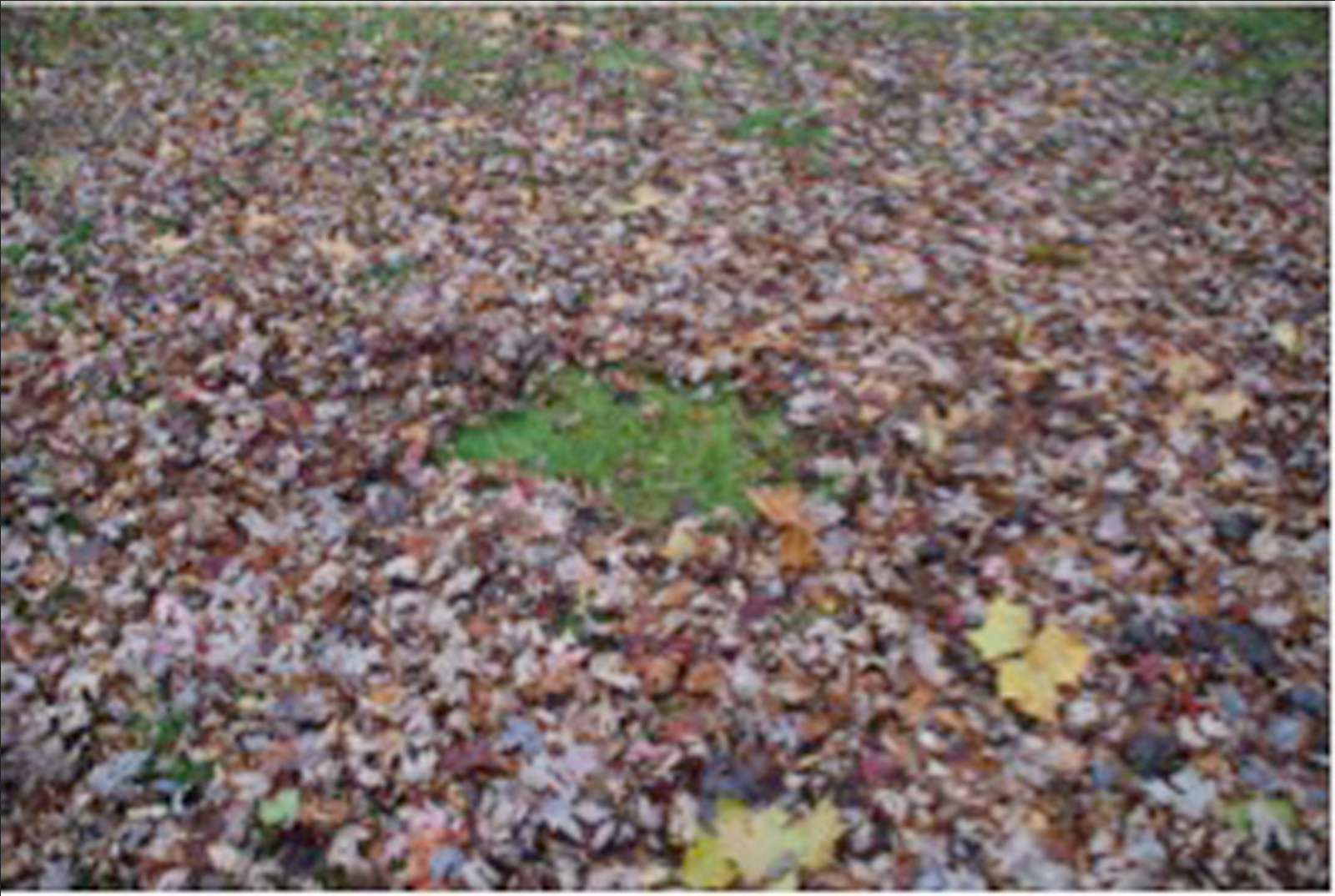picture of the week
December 6, 2021
Mowing and Leaf Removal
John Orick, Purdue Master Gardener State Coordinator, Department of Horticulture and Landscape Architecture, Purdue University
In late fall, leaf removal from lawns and landscapes is a common maintenance activity for homeowners. This season’s warmer fall temperatures have increased the time period for completing this chore before winter. But, don’t delay, heavy leaf debris allowed to remain on lawns during winter can cause thinning of the turf by preventing light from reaching the leaves, reducing or blocking photosynthesis for turf plants growing under the debris. Lawns with heavy leaf debris remaining on the turf through winter are also more susceptible to snow mold, a winter fungal disease, which can cause damage to turf. Mulching leaves with a rotary mower several times throughout fall is a great way to remove leaves from lawns without raking, blowing, or bagging. When choosing to mulch leaves, dryer leaves mulch more easily and homeowners should not try to shred too many leaves in a single mowing. Choosing mulching as a method of leaf removal may also help improve soil health and add nutrients to the lawn through the return of shredded plant debris to the soil. If the leaf debris is too thick, the homeowner will need to remove leaves from the lawn using a rake, blower, or other equipment.
Click image to enlarge
Turfgrass extension specialists recommend that lawn turf be mowed at a height of 3 inches or higher throughout the growing season. Homeowners should continue to mow lawns at the recommended height until the turf enters dormancy in late-fall. Continuing to mow home lawns right up to dormancy mulches late fallen leaves and may help prevent snow mold diseases.
Homeowners should always avoid mowing, leaf removal, or other maintenance activities on frost covered or frozen turf.
Related Articles and Publications:
Mowing, Dethatching, Aerifying, and Rolling Turf (AY-8-W). https://www.extension.purdue.edu/extmedia/ay/ay-8-w.pdf
Worrying about falling leaves may be ‘mulch’ ado about nothing, Purdue News, October 22, 2001, http://www.purdue.edu/uns/html4ever/011022.Reicher.mulch.html
Turfgrass Disease Profiles: Gray Snow Mold (BP-101-W). https://www.extension.purdue.edu/extmedia/BP/BP-101-W.pdf
Turfgrass Disease Profiles: Pink Snow Mold (BP-102-W). https://www.extension.purdue.edu/extmedia/bp/bp-102-w.pdf




